Celebrate the Caribbean Endemic Bird Festival (CEBF) with us! Our theme in 2023 is “Water: Sustaining Bird Life” highlighting the importance of water conservation to both humans and birds. Have fun learning about a new endemic bird every day. We have colouring pages, puzzles, activities, and more. Download for free and enjoy nature with your family at home.
Endemic Bird of the Day: Jamaican Mango
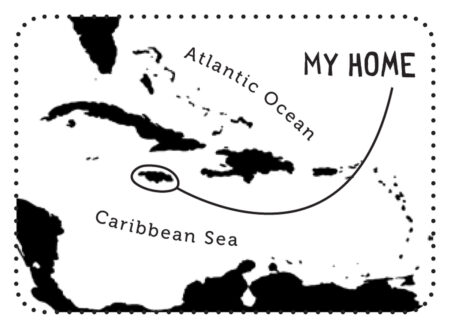 When you think of hummingbirds, you most likely think of glittering hues of green, blue, red and purple. However, Jamaican Mango (Anthracothorax mango) is truly like no other, appearing dark overall compared to other species. It is also the largest of the four hummingbirds in Jamaica!
When you think of hummingbirds, you most likely think of glittering hues of green, blue, red and purple. However, Jamaican Mango (Anthracothorax mango) is truly like no other, appearing dark overall compared to other species. It is also the largest of the four hummingbirds in Jamaica!
Both male and female have metallic magenta purple head and neck and velvet black underparts. Upperparts are dull green-bronze. The bill is slightly curved and black, central tail feathers are dusky bronze to dull black and the others are metallic violet. The female’s outer tail feathers are tipped white. Juvenile males have a deep blue throat until they are two years old.
The Jamaican Mango can be found in a variety of habitats from open and semi-open lowland vegetation including arid areas, gardens and plantations.This majestic bird is regularly seen visiting the flowers of the cactus, Agave, and Aloe Vera in the dry forest. It is also seen visiting mango flowers, which could explain its common name. Like other hummingbirds they follow the nectar trail and will disperse to mid-altitude regions in Cockpit Country and to Blue and John Crow Mountains from June–August. They also eat small flying insects caught on the wing and has been observed pulling insects from spider webs.
This is a rather silent hummingbird but it has a high-pitched raspy call “tsic-tsic-tsic-tsic.”
It breeds all through the year, peaking from January to May and will even nest in gardens. The female builds a small cup-shaped nest of densely woven silky fibers, seed down (e.g. Tillandsia) and cobwebs, at about 3–8 m above the ground. Clutch size is two white eggs and chicks have blackish plumage.
The Jamaican Mango is listed on the IUCN Red list as Least Concern. It is unknown if habitat loss impacts the species since it is found in both forested and disturbed areas. But we should all continue to work together to protect its habitats so that we can continue to be dazzled by this endemic gem for many years to come. Learn more about this species, including its range, photos, and calls here.
Thanks to Damion Whyte for the text!
Colour in the Jamaican Mango
Download our West Indies Endemic Bird colouring page. Use the photos below as your guide, or you can look up pictures of the bird online or in a bird field guide if you have one. Share your coloured-in page with us by posting it online and tagging us @BirdsCaribbean #CEBFfromthenest
Listen to the calls of Jamaican Mango
The call of the Jamaican Mango is a sharp “tsic-tsic-tsic-tsic.”
Puzzle of the Day
Click on the image below to do the puzzle. You can make the puzzle as easy or as hard as you like – for example, 6, 8, or 12 pieces for young children, all the way up to 1,024 pieces for those that are up for a challenge!
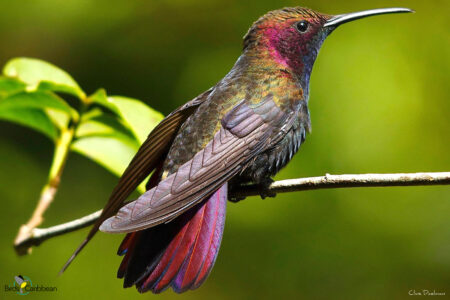
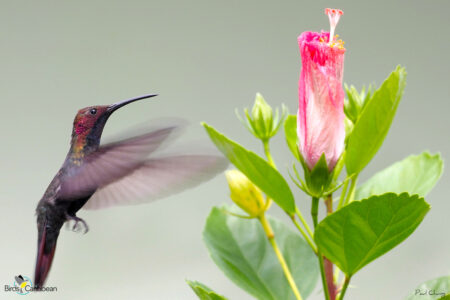
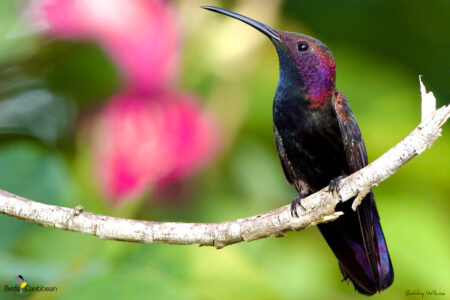
Activity of the Day
FOR KIDS AND ADULTS: Hummingbirds, like the lovely Jamaican Mango, are elegant little birds, often with brightly coloured jewel-like plumage. Why not capture some of their elegance by making your very own hummingbird from paper using origami? Join Josmar Esteban Márquez and learn how to fold a Hummingbird out of paper. The video also features some gorgeous photos of the many hummingbird species that are endemic to the Caribbean islands!
Enjoy this video of a Jamaican Mango in the wild!

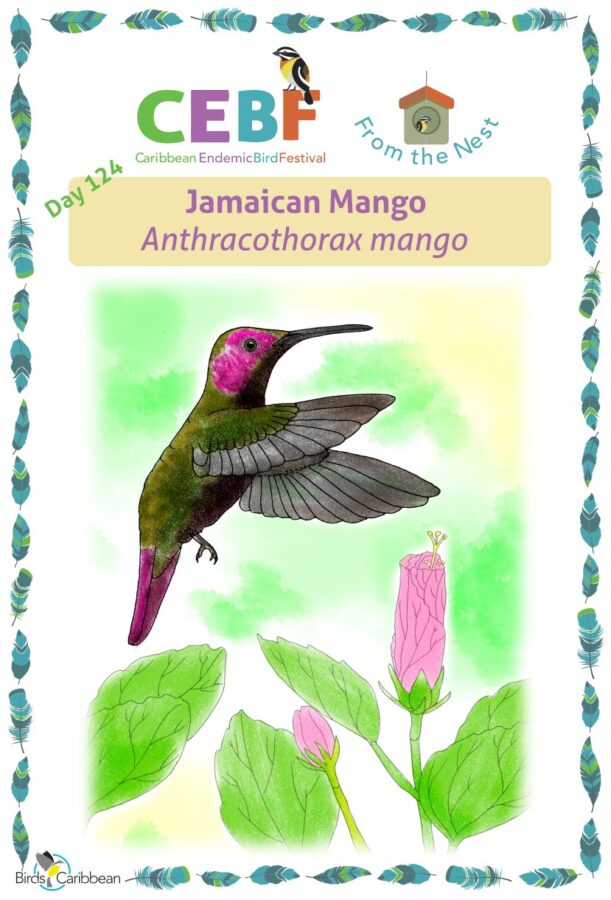
One comment
Comments are closed.